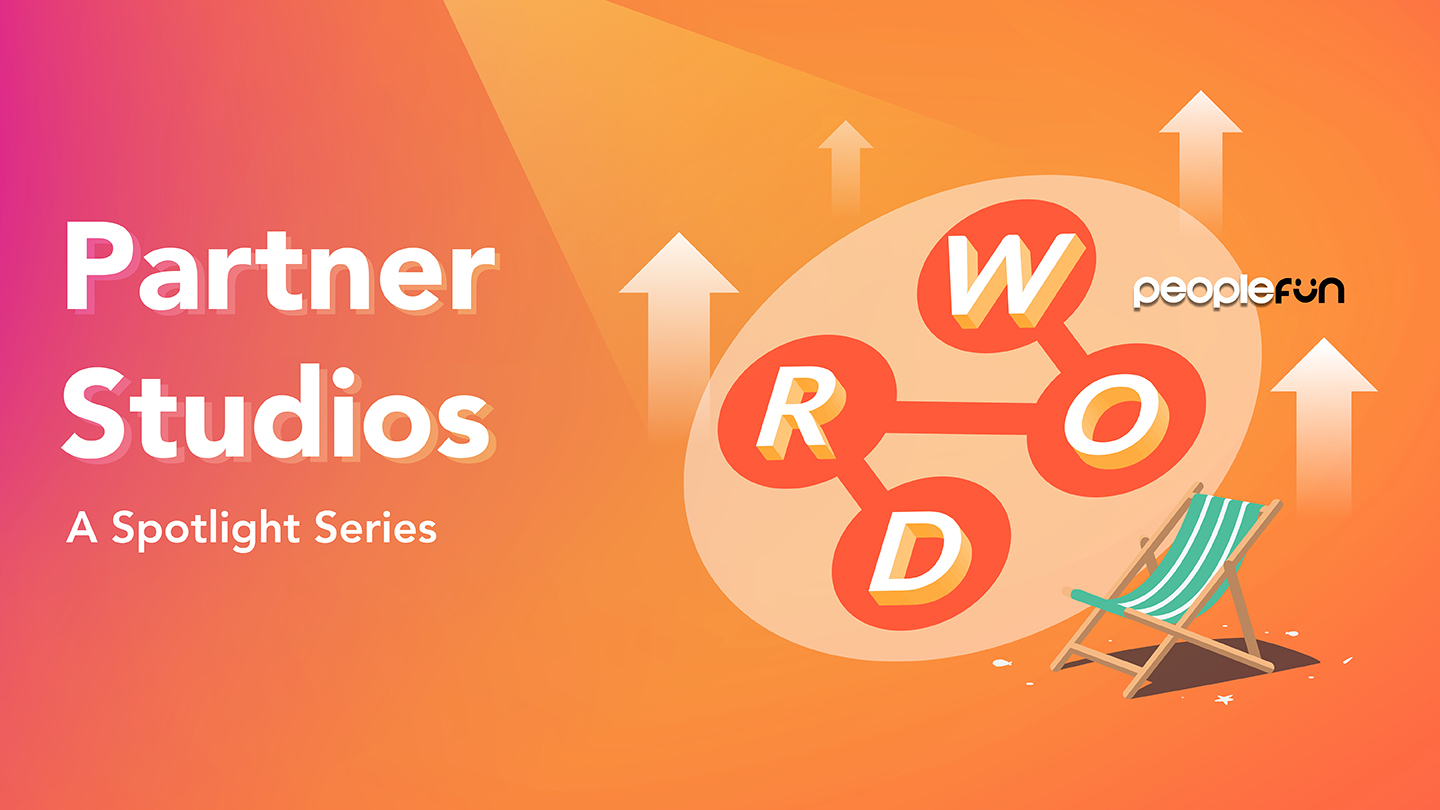Gaming, Monetization, User Acquisition
Wordscapes: Secrets Behind the Most Popular Word Game in the World
Jun 18, 2020

Gaming, Monetization, User Acquisition

The next installation in our Partner Studios Spotlight Series is here! We’re providing a look behind the curtain into what working for one of our studios looks and feels like — all across the world. This month, we’re focused on PeopleFun and their smash hit Wordscapes.
PeopleFun’s crossword-search style game Wordscapes turns three this month! And to mark this occasion, we’re digging into what has made the game so successful over the years. Often, indie game developers want to know the “secret sauce” behind turning a game into a resounding hit. Like any recipe, it isn’t one stand-out ingredient that makes a huge difference, but how different ingredients mix together to create that memorable flavor — for Wordscapes, those ingredients are user acquisition (UA), product and monetization and the teams responsible for each of these functions.
The initial virality and continued success behind Wordscapes can be directly mapped back to these three core functions humming together. In this post we’ll be delving into each of them, and uncovering best practices to implement into your own mobile gaming strategy.
For PeopleFun, finding a UA strategy that fit took a lot of time and effort. The team was starting from scratch, and needed to learn what core elements of gameplay made the game unique, and kept users coming back for more. The first goal of any performance marketing campaign is to get people to download your game by leveraging content that showcases the fun, core gameplay elements.
Then, the team started to recognize common characteristics among those downloading Wordscapes, giving them the ability to tailor content so it would resonate more with their audience — tapping into a deeper, more emotional connection with players. The team took this further and experimented with different social platforms they believed that players would have a large presence on as well. Mapping some of these behaviors and characteristics together gave the team a pretty good idea of who was playing Wordscapes regularly.
After these demographic parameters were identified, the team could dig a bit more into user behaviors in Wordscapes that tended to indicate a repeat player, like those that make it to a certain level in the game, or those that make an in-app purchase (IAP).
Through constant iteration and refinement, the team was able to develop a solid profile of who is playing Wordscapes, where they look to consume content, what their motivations are, and what sort of content they connect with the most. While the general shape and idea of their player personas remain intact, it’s always a shifting target as human preferences transform over time.
But performance marketing can only take you so far without accompanying support — the UA team works closely with the product team at PeopleFun. For example, they are gauging player interest in potential new game features through creative testing.
Carol Miu, Chief Product and Analytics Officer at PeopleFun is the first to say that no one could have predicted the smashing success that Wordscapes has become — with well over 115 million installs since its launch three years ago. And with this massive user base, Carol and her team are always looking for new ways to engage users, and constantly testing these ideas.
Lately, the team at Wordscapes has seen a shift from focusing solely on earning new, quality users to develop new gameplay features to match what existing players are looking for out of their gaming experience. “We’ve been looking to midcore games lately for inspiration on some of the game mechanics we’re incorporating into Wordscapes,” said Carol.
Carol’s team is also testing different LiveOps events — focusing on competitions where players can engage with new gameplay mechanics and collect items as well as collaborate through social features — like launching a Teams feature in April. Performing various A/B tests helps Carol and her team hone in on the details that really matter for Wordscapes players. After quality users are continually coming back to play Wordscapes, the final piece is looking for ways to monetize these users through IAP or ad monetization.
Initially, Wordscapes was managed on a traditional advertising waterfall which proved difficult for testing and iterating on monetization strategies. The monetization team implemented MAX and quickly noticed a big increase in revenue, primarily driven by increased competition from in-app bidding. MAX also reduced latency — allowing the team to cycle through waterfalls at a much quicker rate, and accommodate more network lines as well as show more ads to users.
MAX also opened up a world of A/B testing, where the team could get into the weeds to find out what networks and CPM rates were driving incremental revenue in specific ad units and countries. This empowered the ad monetization team to make real-time decisions with immediate, observable revenue impact.
When A/B testing was in place, the team was able to get a better understanding of geography-level ad targeting — the team made strategic changes by taking into account holidays, country-level differences, large advertiser launches, and seasonality. All of these factors have an impact on who is more likely to click on one of our ads. The team shares this data with product and UA teams to ensure they’re continuing to refine our target audiences for Wordscapes.
UA, product, and monetization are three key pillars that influence the success of any game — and finding the right cadence for mixing these three elements together is the key to a successful mobile game. Wordscapes remains a powerhouse as the industry’s most popular word game, and has been hitting records for three years — we’re looking forward to what the future holds for this relaxing, challenging word puzzle game.